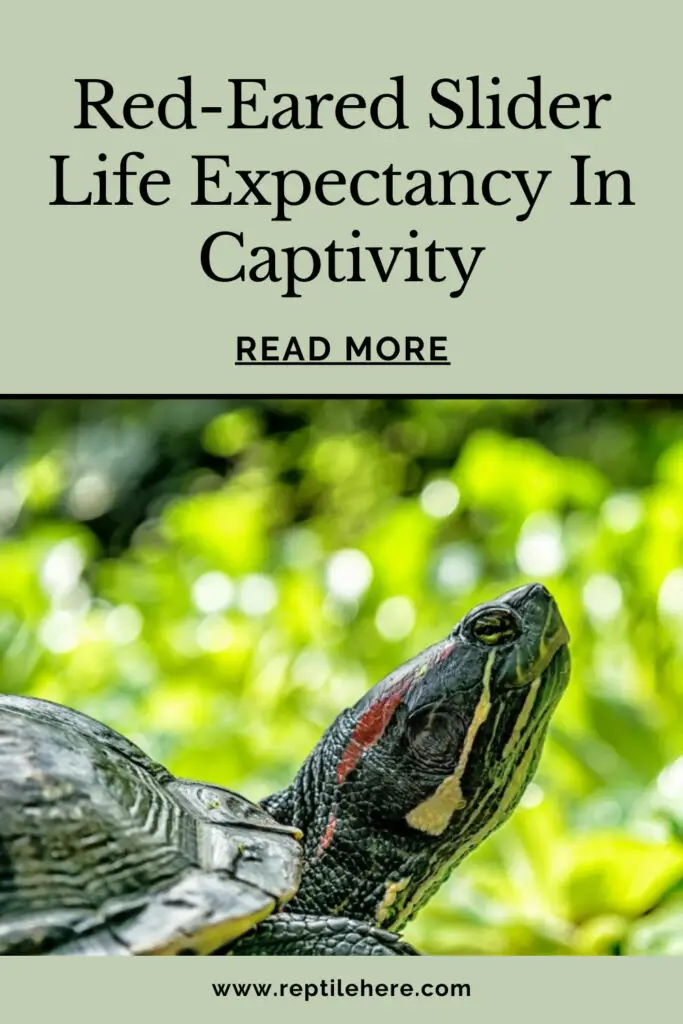Red-Eared Slider Life Expectancy In Captivity
Do you own a red-eared slider turtle or planning to get one? If yes, you might be curious about how long it will live. This is crucial to help you know how you’ll commit yourself to take care of it. So, what’s the lifespan of a red-eared slider as a pet?
The red-eared slider life expectancy in captivity is about 20 years or more. However, how long your slider lives can vary depending on various factors such as living conditions, diet, exercise, health, etc.
In this article, we have discussed more details about the lifespan of a red-eared slider in captivity and how it compares to the sliders in the wild. We’ve also discussed factors that affect your turtle’s lifespan and tips for extending your turtle’s lifespan.
Red-eared slider life expectancy in captivity
Contents
If you properly take care of your red-eared slider pet turtle, then it can last for well over 20 years, so you should be prepared for a lifelong relationship with this turtle. Else, you may end up releasing it into the wild as most people do.
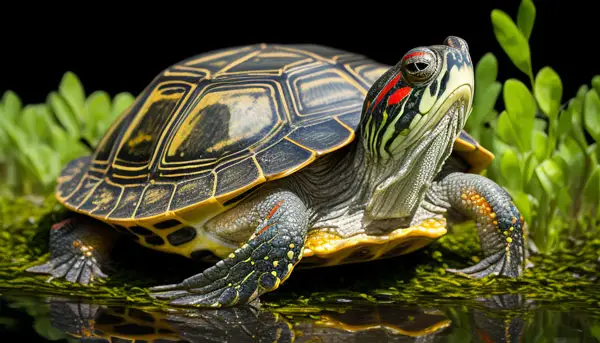
As we hinted in our intro, the red-eared slider life expectancy in captivity is subject to vary depending on how well you care for your turtle. If you neglect your turtle, it may not go for many months, leave alone years.
The opposite is also true. Proper red-eared slider care will enable it to hit the 20-year mark and do some more! You may even pass your slider from generation to generation, who knows.
That said, the quality of life and surrounding environment will have a great influence on your turtle’s health and thus affect its lifespan.
You must provide your turtle with a spacious tank with plenty of swimming area, keep the water quality top-notch, and provide a basking area and access to UV light.
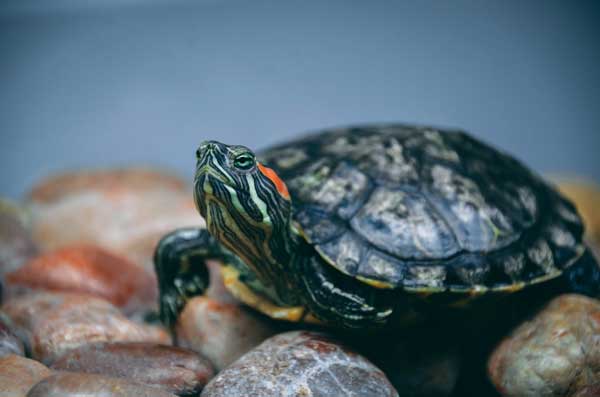
Feed your pet a balanced diet containing both plant and animal materials, and take her to your vet for routine checkups.
If you do all this, then you shouldn’t have to worry about losing your pet any time soon!
What factors affect your red-eared slider turtle life expectancy?
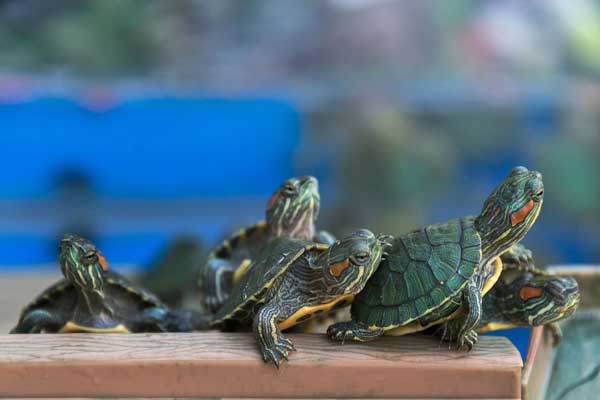
Here are the factors affecting the lifespan of red-eared sliders in captivity:
- Wrong tank setup: If you house your slider in a small tank, it will feel cramped up and become easily stressed. As such, its body can develop various health problems that cut short its lifespan. The perfect tank setup should feature a basking spot, hiding spots, etc. to make your turtle happy.
- Poor water quality: If you don’t regularly clean your turtle tank and perform water changes, the water can easily become dirty and turn into a breeding site for harmful organisms that affect your turtle’s health and well-being. Also, not maintaining the water at the recommended temperature can make your turtle develop respiratory illnesses which can turn fatal!
- UV light exposure: Most people fail to give their pet turtles in indoor enclosures access to UVB lighting. This is a serious mistake that risks your turtle getting life-threatening health problems such as metabolic bone disease.
- Diet: Red-eared sliders are generally omnivorous. Adults are herbivores while baby sliders are more carnivores. Poor nutrition or overfeeding your turtle only one type of food will result in malnutrition. This opens the gateway to various health issues that affect your turtle’s lifespan.
- Lack of exercise: As we have just said above, inactivity in pet RES is one of the factors that makes a big difference between their age and that of their wild counterparts.
- Exposure to chemicals and toxins: Some novice turtle owners use cleaning products containing harmful chemicals that find their way into the turtle’s body and affect its health. Also, feeding your turtle foods containing pesticides and herbicides will affect its lifespan and shorten its lifespan.
Do you take your turtle to a reptile vet for regular checkups? If not, then that’s another reason you’re likely to lose your pet too early.
Red-eared slider lifespan in wild vs captivity
The red-eared sliders are capable of living much longer in the wild. While the lifespan of red-eared slider turtles in captivity is about 20 to 30 years, they can click up to 40 or 50 years in the wild.
In general, all turtle species are known to live longer in the wild than in captivity.
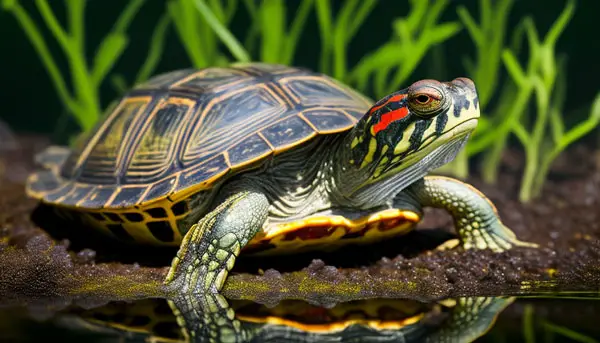
When in the wild, the turtle is living in its natural habitat where all the conditions are perfect. It also enjoys constant training of its immune system.
You also can’t compare the volume of water your turtle enjoys in nature to the amount in your indoor enclosure. Even when you get the biggest turtle aquarium available, it will still be smaller next to the turtle’s natural habitat.
In the wild, the slider has access to natural sunlight which is the best source of UV light. UVB light is essential for the production of vitamin D3 in turtles.
This helps with proper calcium metabolism—promoting healthy bones and shell growth and keeping off life-threatening diseases such as metabolic bone disease (MBD).
Turtles in the wild also live an active life as they forage for food and avoid predators. This is unlike turtles in captivity that are always inactive ad easily become overweight, leading to various health problems.
As for the diet, turtles in the wild enjoy a variety of foods unlike turtles in captivity which are used to the same types of food throughout their life as pets.

Red-eared sliders in the wild also live a stress-free life. Sliders in captivity usually get stressed due to confinement to smaller enclosures, lack of sunlight exposure, etc. This negatively affects their health and lifespan.
How do you extend your red-eared slider’s lifespan?
To extend the lifespan of your pet red-eared slider turtle, make sure you provide it with suitable living conditions—this includes a spacious turtle enclosure with a basking platform, plenty of swimming area, and hiding spots.
Maintain the water quality inside the tank at the correct temperatures and keep it clean at all times.
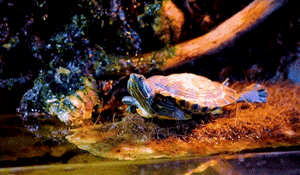
Never overcrowd your red-eared sliders in a turtle, or else they’ll become easily stressed and their quality of life will be affected.
Provide your turtle with a healthy diet that includes both plant and animal-based nutrients, and commercial turtle pellets as well.
Also, keep your red-eared slider active by providing it with tons of opportunity ties to explore such as hiding spots, live prey, turtle toys, etc. You can also let them out of the tank and let them roam around as part of the exercise.
Regular checkups by a vet can help prevent most of the common red-eared slider health problems or even detect them in their early stages and stop them before they affect your pet’s health.
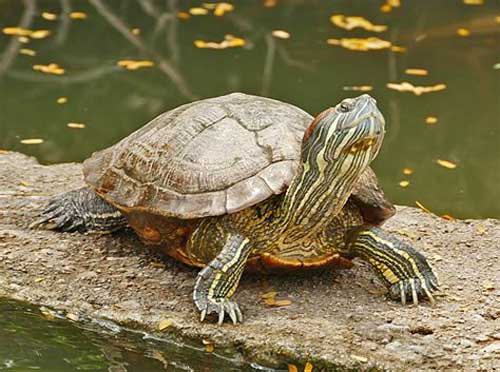
Above all, make sure you use safe cleaning products for your turtle tanks to avoid exposing them to harmful chemicals. Avoid feeding them inorganic fruits/veggies or prey food items caught in the wild as they may carry parasites.
How long can a red-eared slider live without food?
Red-eared sliders can live without food for long periods of time. Hoverer, the exact period will depend on the age of the turtle and its overall health condition.
For instance, a healthy adult red-eared slider can stay for about 2 to 3 months without food. A baby red-eared slider, on the other hand, can’t go for long without food as it requires a frequent (daily) feeding schedule.
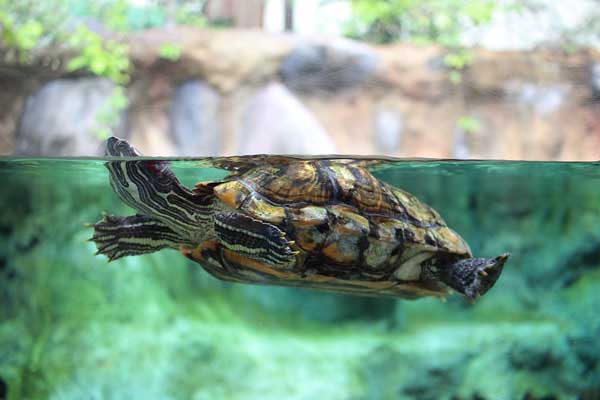
But don’t starve your turtle intentionally just because we’ve said it can go long without food. A well-fed turtle is healthier and has a higher chance of staying for longer years that a starved turtle.
FAQs:
The oldest red-eared slider ever recorded turned 65 in August 2021 and is a female named Magoo. It was bought back in August 1956 by its owner Marie Valpey. You can read the full story of this oldest slider turtle here and discover its secret to long life.
Releasing your slider into a pond in the wild isn’t recommended as these turtles are invasive species and are a menace to control. Instead of throwing it into the wild, consider finding it a new home or take it to the nearest red-eared slider sanctuary.
Final Verdict
The life expectancy of your red-eared slider turtle pet in capacity is approx. 20 years. However, this lifespan can vary depending on the level of care you give your pet. When the conditions are perfect, you can expect your turtle to live for well over 20 years all the way up to 30 years. Your pet turtle’s lifespan is shorter than that of its wild sliders as the latter is more active, has natural habitat, exposure to direct sunlight, and is less stressed.
Remember that if you neglect your turtle and put it in poor living conditions, its lifespan will be greatly affected. Make sure you accord your pet turtle the best care, house him in a spacious tank with clean and quality water, feed him a high-quality diet, ensure, and give him access to UVB lighting. And you’ll enjoy his company for decades to come!
